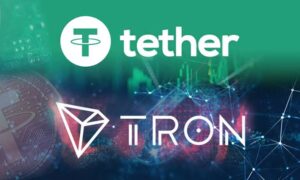
In 2022, there was a notable shift in crypto investments, with a strong focus on more stable sectors such as Infrastructure and Centralized Finance (CeFi). This marked a change from the experimental approach seen in 2021, as investors increasingly sought stability in a volatile market.
According to a report by Lattice Fund, which analyzed over 1,200 crypto pre-seed and seed rounds from 2022, investment priorities moved toward these reliable sectors. This shift continues to influence today’s market, highlighting the importance of long-term, sustainable growth within the crypto space.
Surge in Infrastructure and CeFi Funding
Lattice Fund’s report revealed that the most significant funding increases occurred in Infrastructure and CeFi projects. Infrastructure received close to $2 billion, while CeFi attracted $450 million, representing 3x and 2x growth compared to 2021. This trend reflects strong investor confidence, with 80% of CeFi and 78% of Infrastructure projects successfully launching on mainnet.
While sectors like NFTs and the metaverse began to lose traction, Infrastructure projects remained a reliable investment, largely because they provide essential services to other crypto companies. A standout example is Eigenlayer, which raised seed funding in early 2022 and successfully expanded its market strategy, drawing interest from middleware projects.
Overall, nearly $5 billion was invested in around 1,200 crypto startups in 2022—a 2.5x increase from the previous year. This highlights the critical role that Infrastructure and CeFi sectors play in the evolving crypto ecosystem.
Ethereum’s Continued Leadership and Ecosystem Challenges
Ethereum solidified its position as the dominant layer-one blockchain in 2022, drawing in $1.4 billion in investment—significantly more than its competitor Solana, which raised around $350 million. Both networks saw similar success in follow-on funding, but other ecosystems faced difficulties.
Polkadot’s ecosystem experienced a 40% drop in fundraising, and projects in the NEAR ecosystem struggled to secure additional capital. Binance’s ecosystem also saw setbacks, with one-third of its teams halting operations. Solana’s project failure rate doubled from 2021, reaching 26%.
Despite these hurdles, Bitcoin projects stood out for their resilience, with all teams remaining active two years after launch, reinforcing Bitcoin’s reputation as a stable force in the market.
Decline in NFTs and the Metaverse
In contrast to the excitement surrounding NFTs and the metaverse in 2021, these sectors faced waning interest in 2022. As the bear market took hold, attracting and retaining users became increasingly difficult, with retail interest fading. Although metaverse projects raised around $280 million, none achieved product-market fit, and over 21% of teams ceased operations.
This decline underscores the uncertainty of crypto trends, where what’s popular today may not sustain long-term investor interest. While NFTs and the metaverse lost momentum, newer sectors like decentralized physical infrastructure (DePIN) and AI, which were hardly on the radar in 2022, are now gaining significant attention.
Why This Matters Now
The investment trends from 2022 have long-term implications for the crypto industry. The focus on Infrastructure and CeFi points to a more mature market, where stability and growth potential take precedence. Projects in these sectors are better positioned to weather market fluctuations, while more speculative areas, like NFTs and the metaverse, may continue to struggle.
As the crypto space evolves, understanding where capital is being directed provides insight into emerging trends. The lessons from 2022 highlight the importance of focusing on fundamental sectors, especially in uncertain times.
In the coming years, Infrastructure is expected to maintain its role as a key driver of growth, while newer sectors like AI and DePIN could lead the next wave of innovation. For those involved in crypto, staying informed about these developments will be crucial for navigating the rapidly changing landscape.






